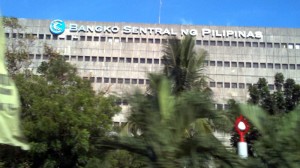Regulator curbs bank lending to real estate sector

MANILA, Philippines–Lending for the construction of new buildings and homes would slow down following the recent imposition of capitalization limits to curb excessive risk taking in the real estate sector.
Deputy Governor Nestor A. Espenilla Jr. said that the regulator’s new real estate stress test (REST) limits that took effect earlier this week would prevent a “bubble” from forming in the property industry, which could have far-reaching effects on the rest of the economy.
“REST limits are a signal to the industry to pay close attention to their real estate exposures because of the potential risks,” he said this week.
Under the new regulations—an innovation of local regulators—a bank’s level of capital is linked to its exposure to real estate, be it in the form of loans or investments in property firms. This is on top of existing limits on the percentage of a bank’s real estate loans relative to its total portfolio.
“Lending to real estate is one of the fastest growing components of credit,” said Espenilla, who believed that, whether or not a bubble was performing, it would be best to link every credit decision to capital.
According to the new rules, even if 25 percent of a bank’s real estate exposure were to be written off, the bank should still maintain a common equity tier 1 capital ratio of at least 6 percent. Its total capital adequacy ratio (CAR) must also stay above the required minimum of 10 percent.
A bank’s capital serves as buffer that absorbs losses from risk-weighted assets that may be written off. CAR refers to the level of a bank’s capital relative to its assets. This is made up of two types of capital: Tier 1, which mainly refers to common equity of shareholders; and tier 2, which are debt securities that absorb part of the losses in case a bank is ordered shut and liquidated.
Banks that fail to meet REST limits will be given several chances to explain and correct their deficiencies.
A bank that “persistently” fails to comply with the REST limits, or deviates from the commitments in its own action plan, “may be considered to be engaging in unsafe and unsound practice,” the BSP said.–Paolo G. Montecillo
